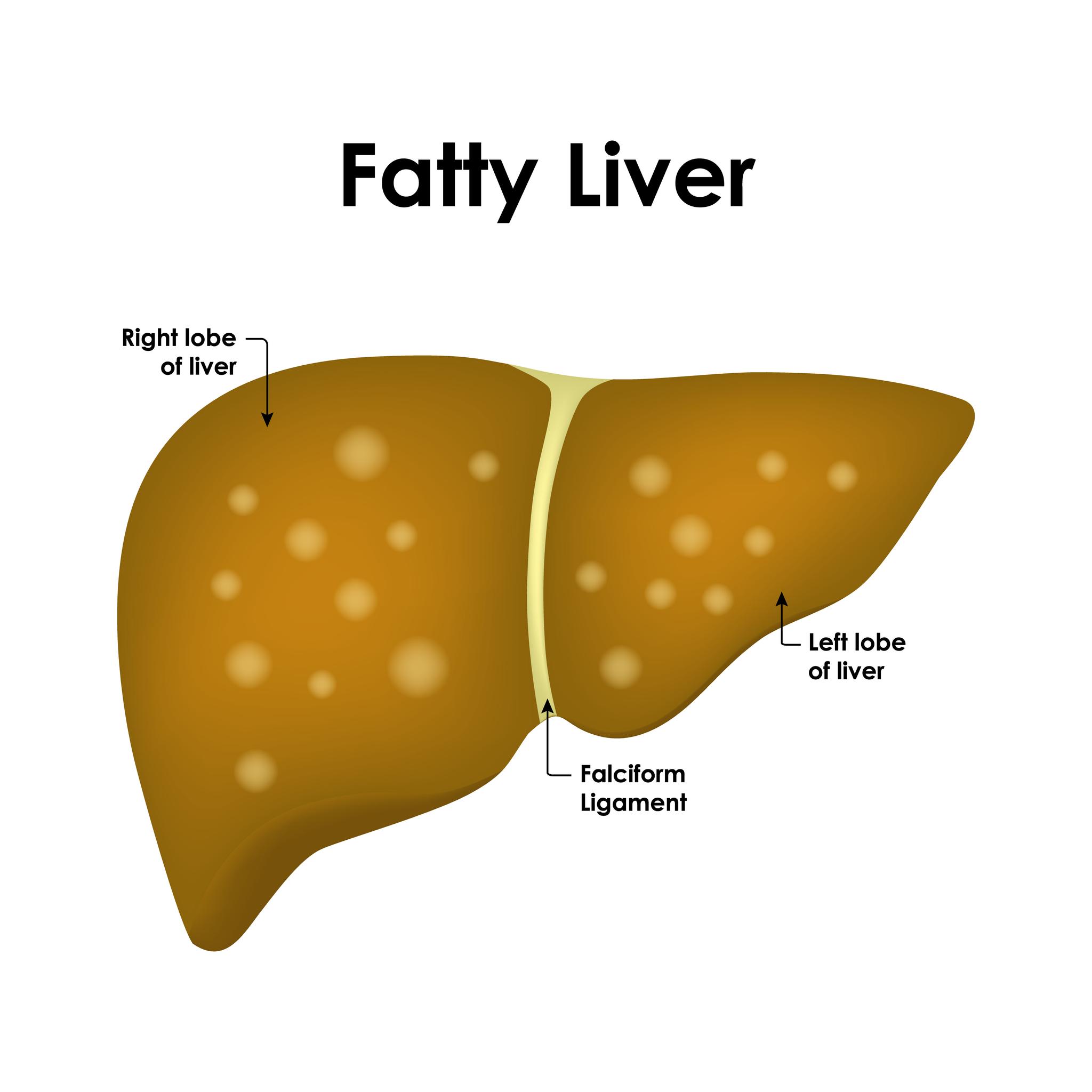
What is fatty liver? How to reverse it?
Fatty liver is a condition of having too much fat deposited in the liver. It is one of the growing health issues in the world. Two out of ten people suffer from fatty liver disease. We should know more about the liver and its function to understand fatty liver disease.
What is a liver?
The liver is a vital organ present under the right side of the abdomen under the rib cage. It is a reddish brown gland that sits just below the diaphragm. It is about the size of a football and weighs about 1.5 kilograms on average.
What are the functions of a liver?
- It produces a green juice called bile, which helps digest fats in our food.
- It also produces proteins that are needed for digestion.
- It stores iron and energy.
- It makes blood clotting factors
- It helps get rid of bacteria and toxins from the body.
- It produces immune factors and helps us fight infections.
What is fatty liver?
Fatty liver is a condition where the liver stores excessive fat. A normal healthy liver contains small amounts of fat. When a liver contains 5% to 10% of its weight as fat, it is called a fatty liver.
What are the stages of fatty liver?
- Steatosis: It is a harmless deposition of fat in the liver, which does not produce any symptoms. It can be detected on routine scans or health checkups.
- Steatohepatitis: The liver gets swollen, irritable or inflamed in this stage. It could be detected in blood tests.
- Fibrosis: Scarring appears in the liver. It increases silently and gradually. However, the liver functions normally in this stage.
- Cirrhosis: A severe and permanent scarring of the liver is called cirrhosis. This stage gradually progresses to liver failure. It also increases the risk of liver cancer.
Who is prone to fatty liver disease?
- People who consume alcohol regularly can develop alcohol-related liver disease (ALD)
- On the other hand, people who do not indulge much in alcohol can also develop it. It is called non-alcohol-related fatty liver disease (NAFLD). The prevalence of NAFLD is increasing these days.
What are the risk factors for developing fatty liver?
- Overweight, especially carrying more weight in the centre
- Diabetes
- High blood pressure
- High blood cholesterol
- Thyroid disorder - an underactive thyroid gland causes weight gain and insulin resistance
- Polycystic ovary syndrome
- Age above 50 years
Some people suffer from metabolic syndrome, where they have multiple conditions like diabetes, hypertension, cholesterol, and fatty liver. It further increases the risk of fatty liver complications.
How to know if you have fatty liver?
- The liver is a very forgiving organ in our body. It does not produce symptoms or pain while getting damaged. Thus, a person would not necessarily know if the damage is happening in the liver.
- The early stages of liver damage do not produce any symptoms. An inflamed and irritable liver might produce some discomfort in the upper right side of the abdomen, while some people may feel extremely fatigued.
- As the damage progresses to cirrhosis and liver failure, it produces symptoms of jaundice, yellowish discolouration of the skin and eyes, distended abdomen, and fluid build-up in the legs.
How can fatty liver be diagnosed?
- Blood tests: Liver profile or liver function tests can reveal abnormal liver enzyme levels. However, a normal liver blood test may not exclude the possibility of having a fatty liver.
- Ultrasound: Abdominal ultrasound with a brighter liver can indicate fatty liver. Ultrasound reports may contain numerical grading for the severity of fatty liver. However, these gradings are not entirely reliable.
- CT and MRI scans: People who are overweight or have the liver positioned up in the rib cage may not be imaged properly with ultrasound. Such people may need CT or MRI scans.
- Fibroscan: It is similar to an ultrasound scan. It provides direct information on the amount of fat and the extent of scarring in the liver.
- Liver biopsy: Though it is a gold-standard test for diagnosing fatty liver, it is avoided due to its invasiveness. It is generally used for cases to differentiate between fatty liver and some other conditions affecting the liver. A needle is directly inserted into the liver to procure a liver sample, which is tested under a microscope.
How can fatty liver be treated?
Most patients with fatty liver do not develop complications. But 20% to 30% of people with fatty liver can develop cirrhosis, which indicates irreversible damage to the liver. Thus, it is very important to modify the risk factors before fatty liver progresses into cirrhosis. Treatment approaches to the fatty liver include:
- Risk factor control: A tight control of blood sugar, cholesterol, triglycerides, and blood pressure
- Weight loss and maintaining weight: Losing 10% of body weight and maintaining it.
- Plant-based diets: Choosing plant-based diets over animal-based diets and maintaining protein intake.
- Low-sugar and low-fat diets: Reducing the intake of sugars and saturated fats.
- Avoid alcohol: Cutting out or reducing alcohol intake.
- Exercise: Working out for 30 minutes a day, five times a week.
- Medicine: There is no single medicine to control fat deposition. But medicines are used to treat other associated conditions of fatty liver.
Takeaway points
- Fatty liver disease is a growing problem across the world.
- However, it can be reversed before it can cause permanent damage to the liver.
- Modifying risk factors and adopting a healthy lifestyle can help treat a fatty liver.
If you are looking for fatty liver treatment in Bangalore or a liver specialist in Bangalore, visit Bangalore Gastro Centre Hospitals at HSR Layout in Bangalore. It is a state-of-the-art facility that provides top-quality care for digestive conditions ranging from acidity to gastrointestinal cancers.
